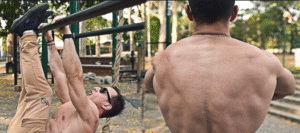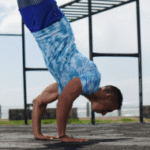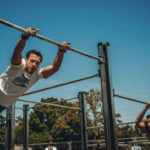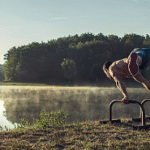Contrast Therapy: It’s Not as Scary as it Sounds!
Okay, let’s talk about **”Contrast Therapy: It’s Not as Scary as it Sounds!”** This guide is tailored for those in the **USA** who might be curious but intimidated by the idea of alternating between hot and cold exposure.
**Introduction: Facing the Hot and Cold Truth**
Contrast therapy—the practice of intentionally switching between hot environments (like saunas or hot tubs) and cold exposure (like cold plunges or showers)—is a major wellness trend in the USA, touted for benefits ranging from muscle recovery to mental resilience. But let’s be honest, the idea of willingly plunging into icy water after relaxing in heat can sound intense, maybe even downright scary! The good news? For most people, when approached correctly, **it truly isn’t as intimidating as it seems.** This guide will help demystify the process, explain why it’s manageable, and offer tips to make your first foray into contrast therapy a positive (and safe!) experience.
**What Exactly IS Contrast Therapy? (Demystifying)**
At its core, it’s simple:
* You spend time getting warm (e.g., 10-20 minutes in a sauna).
* You immediately switch to getting cold (e.g., 1-3 minutes in a cold plunge or shower).
* You might repeat this cycle 2-3 times.
The goal is to leverage the body’s physiological responses to these temperature shifts for health and wellness benefits.
**Why Does it Sound Scary? (Acknowledging the Fear)**
The apprehension usually revolves around the cold part:
* **The Cold Shock Response:** This is real. When you hit cold water, your body involuntarily gasps, your heart rate spikes, and your breathing quickens. It feels like a shock because it *is* a physiological stress response.
* **The Discomfort Factor:** Intense cold is inherently uncomfortable, especially at first. Our bodies are wired to seek warmth and avoid potentially dangerous cold.
* **Fear of the Unknown:** Uncertainty about how your body will react or if you can “handle it.”
* **Intense Portrayals:** Sometimes contrast therapy, especially cold plunges, is portrayed in media or by influencers as an extreme endurance feat, which can be off-putting for beginners.
**Why It’s Manageable (And Often Rewarding!)**
Here’s why you can likely handle it and why many people come to enjoy it:
- **You Are in Control:** Unlike falling into an icy lake, *you* control the key variables:
* **Temperature:** You don’t need to start at near-freezing! Water in the 50s°F (10-15°C) provides benefits and is significantly less shocking than icy temps.
* **Duration:** You decide how long you stay in. Even 30-60 seconds of cold exposure can have effects.
- **Your Body Adapts:** Humans are remarkably adaptable. With consistent, gradual exposure, the intensity of the cold shock response lessens, and your tolerance increases. What feels unbearable initially becomes manageable over time.
- **The Power of Your Breath:** This is the **ultimate tool** for managing the experience. The cold shock makes you want to gasp and hyperventilate. By consciously focusing on **slow, controlled exhalations**, you signal safety to your nervous system, override the panic response, and make the cold far more tolerable. It turns panic into presence.
- **It’s Brief:** The cold part of the cycle is typically very short (1-5 minutes), unlike the longer heat phase. Knowing it’s temporary makes it mentally easier to endure.
- **The “Afterglow” is Real:** Many people report feeling fantastic *after* the session – invigorated, mentally clear, calm, accomplished, and often experience reduced pain or soreness later. This positive reinforcement makes the brief discomfort feel worthwhile.
**Tips for Making Your First Contrast Therapy Experience Less Scary (USA Context):**
- **Start with Contrast Showers:** The easiest, safest way to begin at home in the US. Finish your regular warm shower with 15-30 seconds of the coldest water you can tolerate. Focus on breathing. Gradually increase the cold duration over days/weeks.
- **Choose a Beginner-Friendly Facility:** Look for wellness centers, spas, or recovery labs in your US city that explicitly welcome beginners. Good facilities often have staff to guide you, multiple temperature options, and a supportive atmosphere.
- **Opt for “Warmer” Cold:** When trying a plunge pool, start with temperatures in the higher range (e.g., **55-60°F / 13-15°C**). It will still feel cold and provide benefits but will be less intensely shocking than water in the 40s°F.
- **Keep it Short:** Your first cold plunge doesn’t need to be heroic. Aim for just **30-60 seconds**. The goal is to experience the transition and practice breath control, not endurance.
- **Breathe BEFORE You Plunge:** Take several slow, deep breaths *before* entering the cold, focusing on long exhales to calm your nervous system preemptively.
- **Control Your Breathing DURING:** As soon as you enter the cold, *immediately* focus on extending your exhales. Fight the gasp reflex with slow, deliberate breaths out. This is the #1 technique for managing the shock.
- **Go with a Friend:** Having moral support can make the first time much less intimidating (and it’s safer for initial cold plunges).
- **Focus on the “Why”:** Remind yourself of the potential benefits you’re seeking – better recovery, reduced stress, mental resilience, feeling energized.
- **Keep Hands/Feet Out (Optional):** Initially, keeping your hands and feet out of the coldest water can sometimes make the core body immersion more tolerable.
**Remember the Potential Benefits (Motivation!):**
Why face the chill? Potential rewards include:
* Faster muscle recovery and reduced soreness (DOMS).
* Decreased inflammation.
* Boosted mood and alertness (via endorphins, norepinephrine, dopamine).
* Increased stress resilience and mental toughness.
* Improved circulation.
* Enhanced sense of well-being and accomplishment.
**Safety Remains Paramount (Don’t Make it Scary!):**
The experience is *not* scary when done safely:
* **Medical Check:** **Crucial** if you have heart conditions, blood pressure issues (high or low), circulatory problems (Raynaud’s), diabetes, are pregnant, or have other significant health concerns. Consult your doctor!
* **Hydrate:** Especially important if using a sauna for the heat phase.
* **Listen to Your Body:** Never push through intense pain, dizziness, uncontrollable shivering, or numbness. Exit immediately if something feels wrong.
* **Avoid Alcohol/Drugs:** Never practice under the influence.
* **Have an Exit Strategy:** Know how to get out easily, and have a towel and warm clothes ready.
* **Warm Up Gradually:** After the final cold exposure, allow your body to rewarm naturally or with a lukewarm shower. Avoid extreme heat immediately afterward.
**Conclusion:**
So, is contrast therapy scary? The initial thought, especially of the cold plunge, certainly can be! But as many people across the USA are discovering, when approached correctly, **it’s often far more manageable and rewarding than initially feared.** By starting gradually, using moderate temperatures and short durations, focusing intensely on controlled breathing, listening to your body, and prioritizing safety, you can navigate the challenge effectively. The potential benefits for physical recovery, mental clarity, mood, and resilience often make embracing the heat and the cold a wellness ritual you truly **won’t regret**. Give it a try safely!

Contrast Therapy: It’s Not as Scary as it Sounds!
Route
Calisthenics Gym Houston Functional Bodyweight Training
Secondary phone: (346) 483-3195
Email: info@calisthenicsclubhouston.com
URL: https://calisthenicsclubhouston.com/
Monday 6:00 AM - 7:00 PM Tuesday 6:00 AM - 7:00 PM Open now Wednesday 6:00 AM - 7:00 PM Thursday 6:00 AM - 7:00 PM Friday 12:00 PM - 6:30 PM Saturday 9:45 AM - 12:00 PM Sunday 3:00 PM - 5:00 PM





